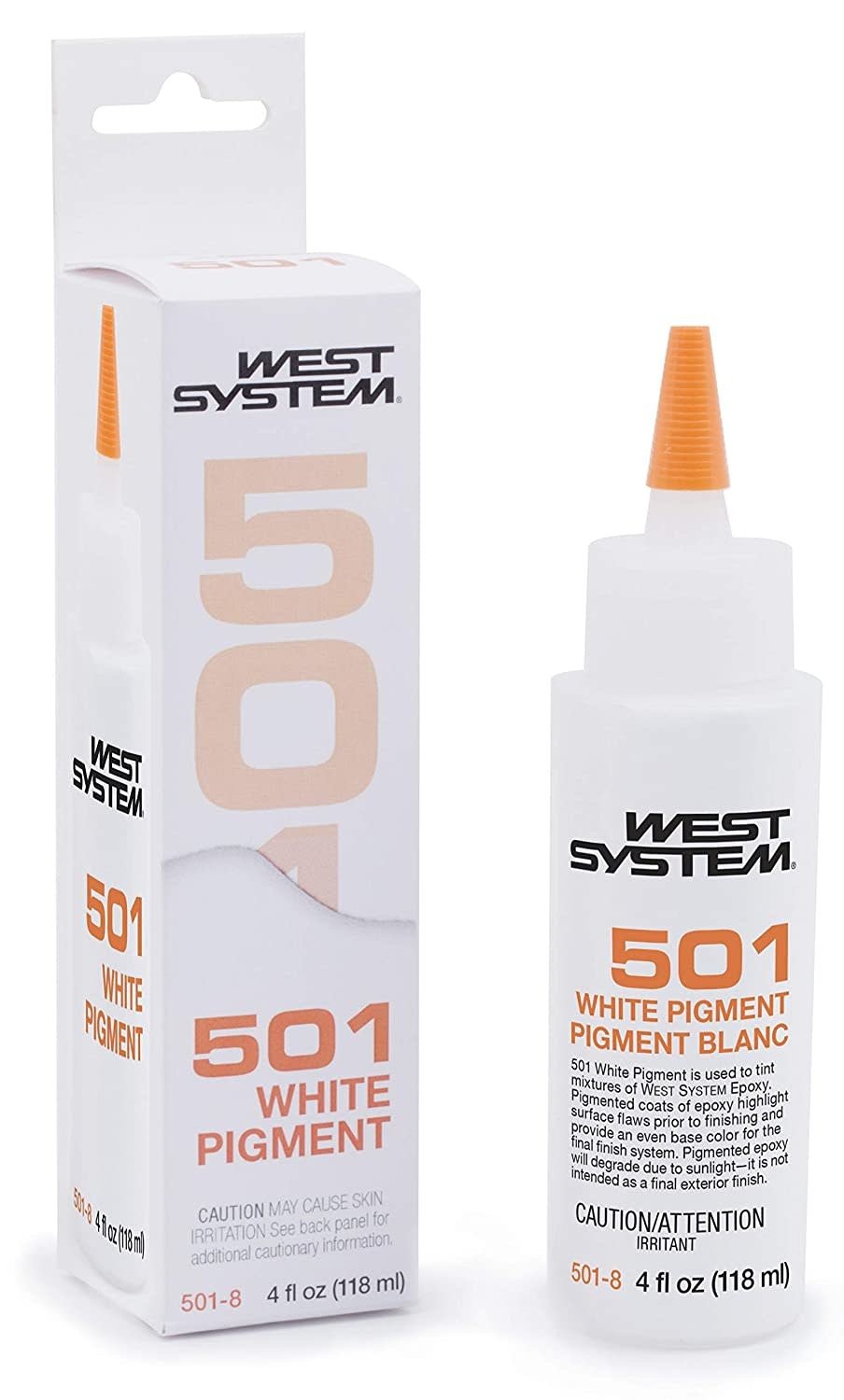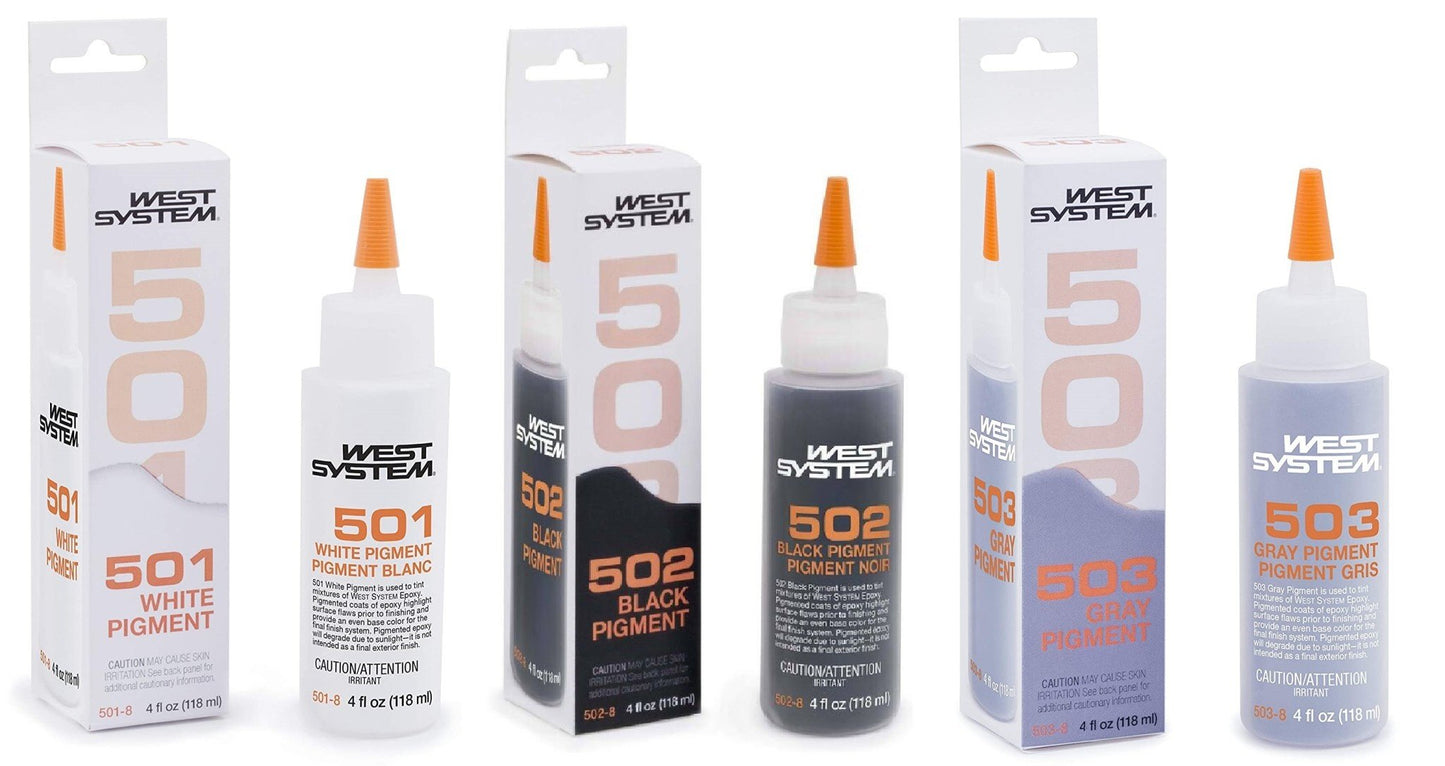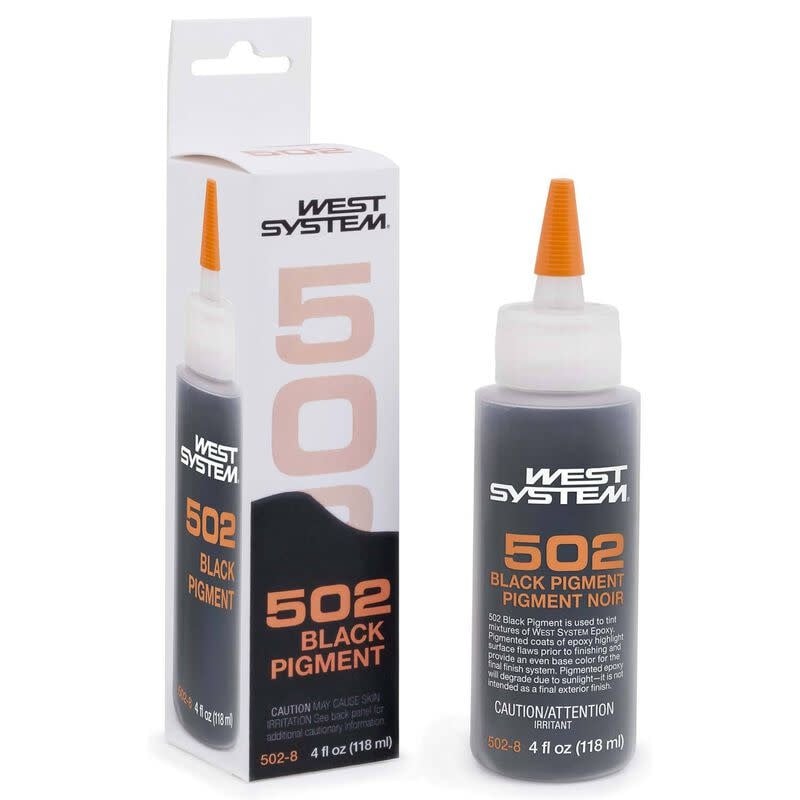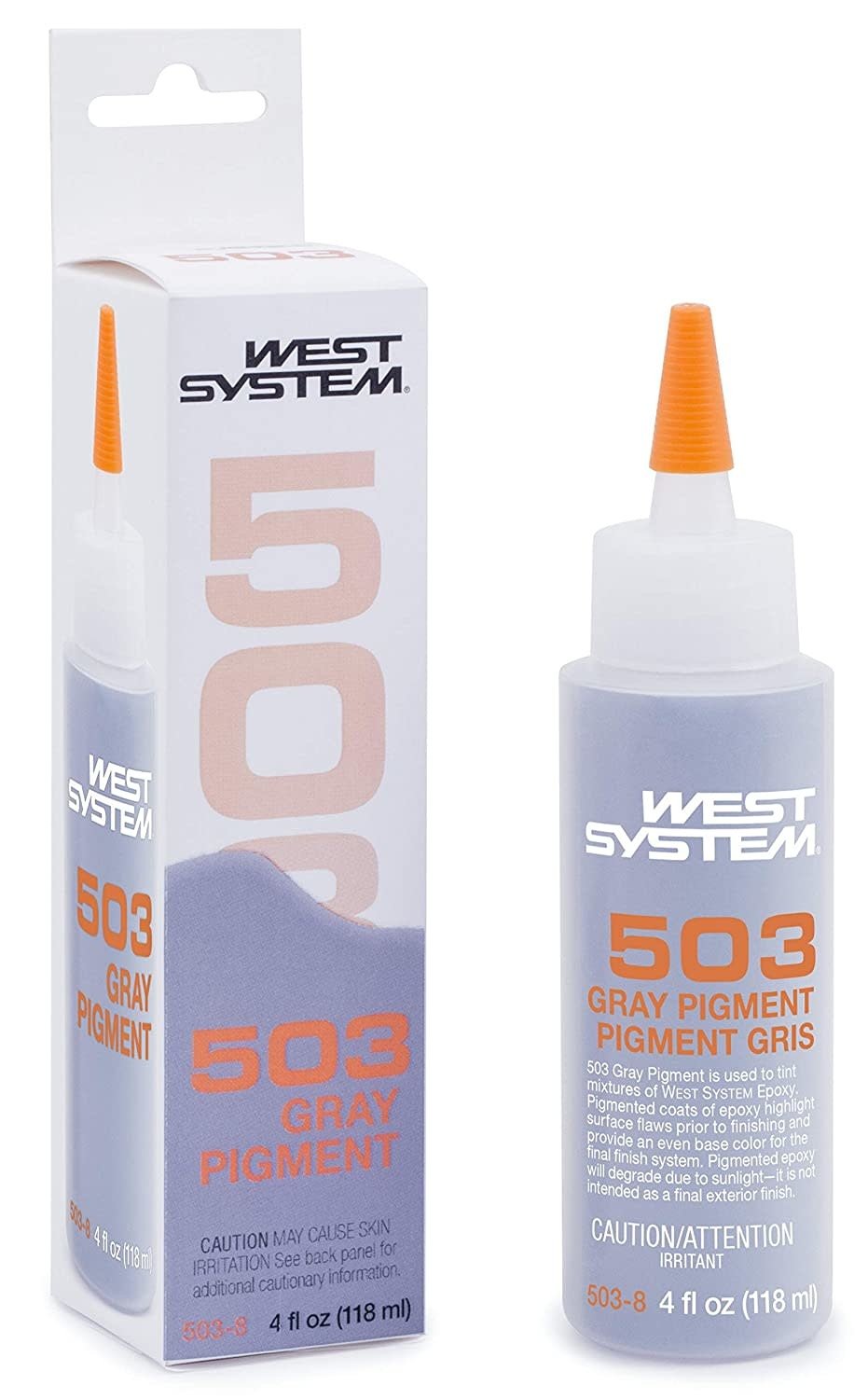West System
500 Series Epoxy Pigment
500 Series Epoxy Pigment
Low stock: 2 left
Couldn't load pickup availability
501 White Pigment is an epoxy-based liquid colorant used to tint the epoxy mixture white, providing an even, white color base for the final finish system. Colored surfaces also tend to highlight flaws and imperfections. Cured, pigmented epoxy surfaces are not a final finish surface, but require an additional paint or UV filter coating for ultraviolet protection. Add to the mixed resin/hardener at a rate of approximately one teaspoon of pigment to 8 fl oz of epoxy. When using 300 Mini Pumps with 5:1 ratio epoxy mixtures, 10 strokes of 105 Resin and 10 strokes of 205 or 206 Hardener yields 8 fl oz. of epoxy; for 3:1 ratio epoxy mixtures, 9 strokes of 105 Resin and 9 strokes of 207 or 209 Hardener yields 8.1 fl oz. of epoxy.
More pigments will increase opaqueness and mixture viscosity. One 4 fl oz bottle will tint approximately 1.5 gal of epoxy.
502 Black Pigment is an epoxy-based liquid colorant used to tint the epoxy mixture black, providing an even, black color base for the final finish system. Colored surfaces also tend to highlight flaws and imperfections. Cured, pigmented epoxy surfaces are not a final finish surface, but require an additional paint or UV filter coating for ultraviolet protection. Add to the mixed resin/hardener at a rate of approximately one teaspoon of pigment to 8 fl oz of epoxy. When using 300 Mini Pumps with 5:1 ratio epoxy mixtures, 10 strokes of 105 Resin and 10 strokes of 205 or 206 Hardener yields 8 fl oz. of epoxy; for 3:1 ratio epoxy mixtures, 9 strokes of 105 Resin and 9 strokes of 207 or 209 Hardener yields 8.1 fl oz. of epoxy.
More pigments will increase opaqueness and mixture viscosity. One 4 fl oz bottle will tint approximately 1.5 gal of epoxy.
503 Gray Pigment is an epoxy-based liquid colorant used to tint the epoxy mixture gray, providing an even, gray color base for the final finish system. Colored surfaces also tend to highlight flaws and imperfections. The colored surfaces also tend to highlight flaws and imperfections. Cured, pigmented epoxy surfaces are not a final finish surface, but require an additional paint or UV filter coating for ultraviolet protection. Add to the mixed resin/hardener at a rate of approximately one teaspoon of pigment to 8 fl oz of epoxy. When using 300 Mini Pumps with 5:1 ratio epoxy mixtures, 10 strokes of 105 Resin and 10 strokes of 205 or 206 Hardener yields 8 fl oz. of epoxy; for 3:1 ratio epoxy mixtures, 9 strokes of 105 Resin and 9 strokes of 207 or 209 Hardener yields 8.1 fl oz. of epoxy.
More pigments will increase opaqueness and mixture viscosity. One 4 fl oz bottle will tint approximately 1.5 gal of epoxy.
Adding a coloring agent to WEST SYSTEM® Epoxy is frequently done to make colored castings, highlight an epoxy-coated surface, act as a colored base coat for paint, etc. Most powdered pigments are satisfactory, as are acrylic paste pigments and universal tinting pigment.
Adding pigment to epoxy should, like everything in life, be done in moderation. Without exception, adding pigment to WEST SYSTEM Epoxy will weaken the cured mixture to some degree. Because of this, we suggest you use very small amounts of pigment, about 5% by weight. As a result, thin films of colored epoxy are somewhat transparent. It usually requires several coats to make the film opaque.
WEST SYSTEM pigments are available in three colors, white, black and gray. We suspend the pigments in an epoxy resin base which allows them to blend thoroughly into the epoxy to make very uniform colors. Because the pigment has an epoxy resin base, it is important not to add more than the recommended amount. Adding an excessive amount of pigment to the epoxy could alter the resin/hardener ratio, compromising cured epoxy performance.
If you need to make a tinted epoxy putty for filling defects, mix WEST SYSTEM epoxy with 406 Colloidal Silica Filler to make the putty. The addition of 406 to the epoxy results in an easily colored, smooth, off-white paste that can be tinted with one of the pigments.
Epoxy, tinted or clear, does not have good UV light resistance. An epoxy coating exposed to UV will yellow, become opaque, and eventually flake off. This process takes a while and if the object you are coating has limited exposure to sunlight, a colored epoxy coating will hold up for years.—From “Adding Pigments to WEST SYSTEM Epoxy” by Brian Knight, Epoxyworks #8
Share




- Choosing a selection results in a full page refresh.
- Opens in a new window.


